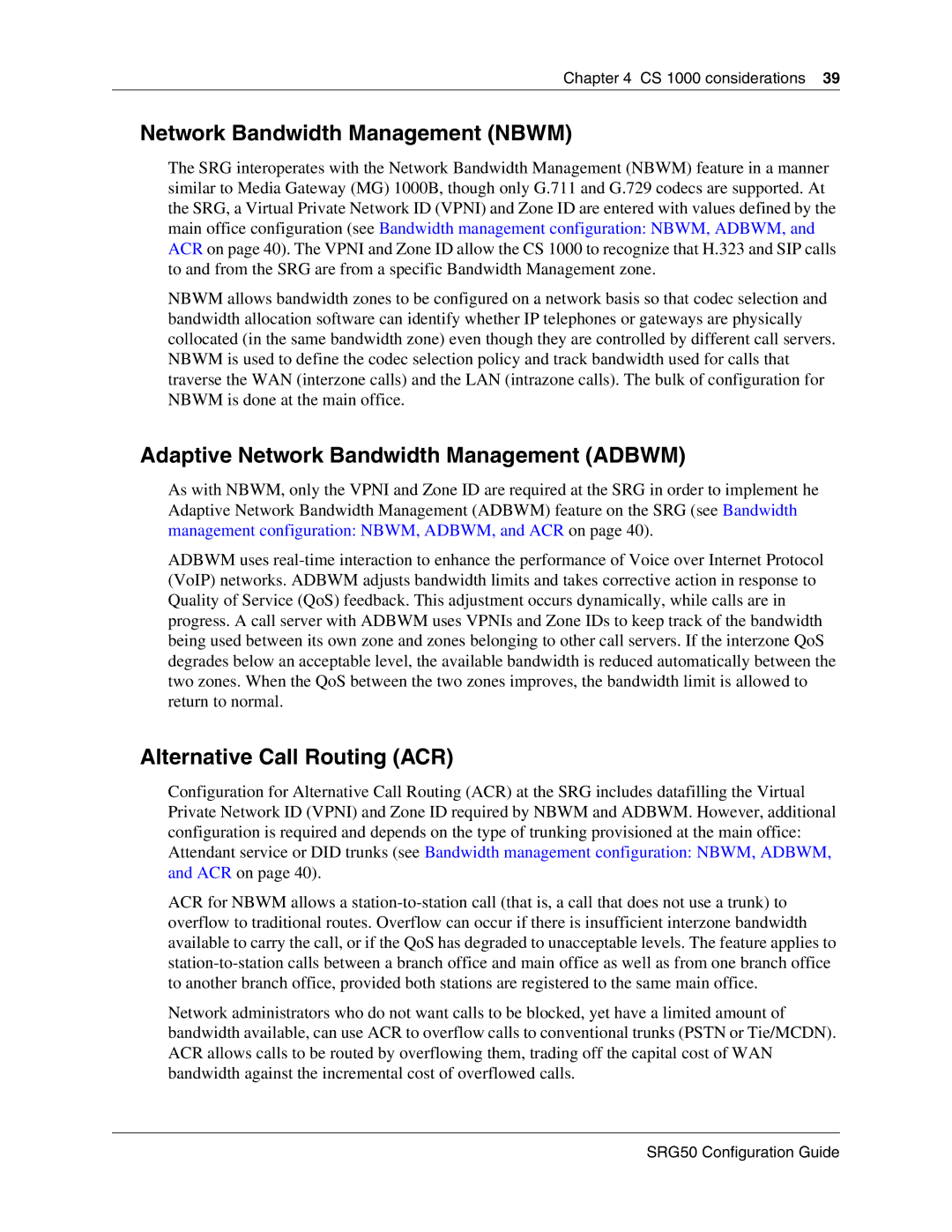
Chapter 4 CS 1000 considerations 39
Network Bandwidth Management (NBWM)
The SRG interoperates with the Network Bandwidth Management (NBWM) feature in a manner similar to Media Gateway (MG) 1000B, though only G.711 and G.729 codecs are supported. At the SRG, a Virtual Private Network ID (VPNI) and Zone ID are entered with values defined by the main office configuration (see Bandwidth management configuration: NBWM, ADBWM, and ACR on page 40). The VPNI and Zone ID allow the CS 1000 to recognize that H.323 and SIP calls to and from the SRG are from a specific Bandwidth Management zone.
NBWM allows bandwidth zones to be configured on a network basis so that codec selection and bandwidth allocation software can identify whether IP telephones or gateways are physically collocated (in the same bandwidth zone) even though they are controlled by different call servers. NBWM is used to define the codec selection policy and track bandwidth used for calls that traverse the WAN (interzone calls) and the LAN (intrazone calls). The bulk of configuration for NBWM is done at the main office.
Adaptive Network Bandwidth Management (ADBWM)
As with NBWM, only the VPNI and Zone ID are required at the SRG in order to implement he Adaptive Network Bandwidth Management (ADBWM) feature on the SRG (see Bandwidth management configuration: NBWM, ADBWM, and ACR on page 40).
ADBWM uses
Alternative Call Routing (ACR)
Configuration for Alternative Call Routing (ACR) at the SRG includes datafilling the Virtual Private Network ID (VPNI) and Zone ID required by NBWM and ADBWM. However, additional configuration is required and depends on the type of trunking provisioned at the main office: Attendant service or DID trunks (see Bandwidth management configuration: NBWM, ADBWM, and ACR on page 40).
ACR for NBWM allows a
Network administrators who do not want calls to be blocked, yet have a limited amount of bandwidth available, can use ACR to overflow calls to conventional trunks (PSTN or Tie/MCDN). ACR allows calls to be routed by overflowing them, trading off the capital cost of WAN bandwidth against the incremental cost of overflowed calls.
